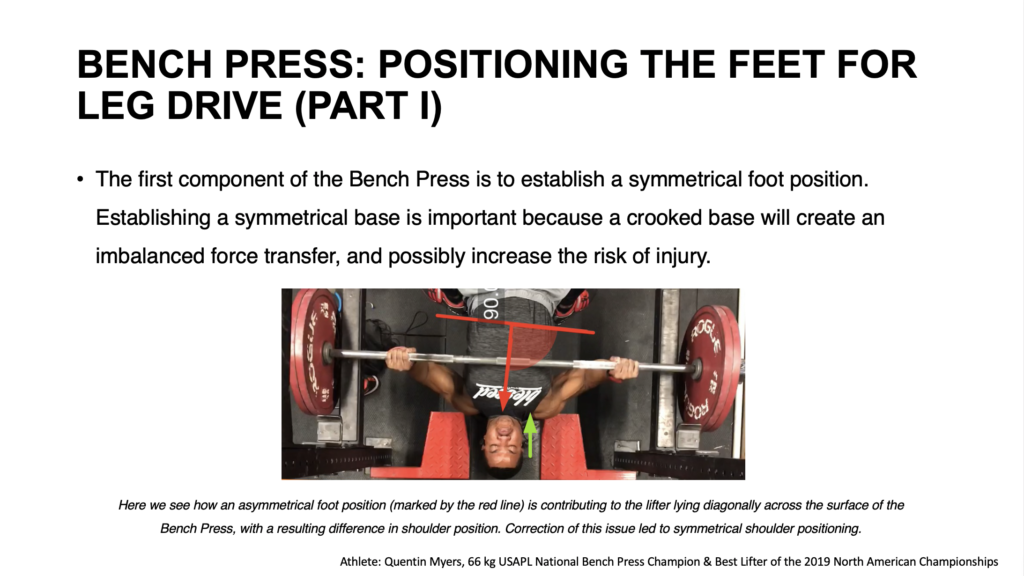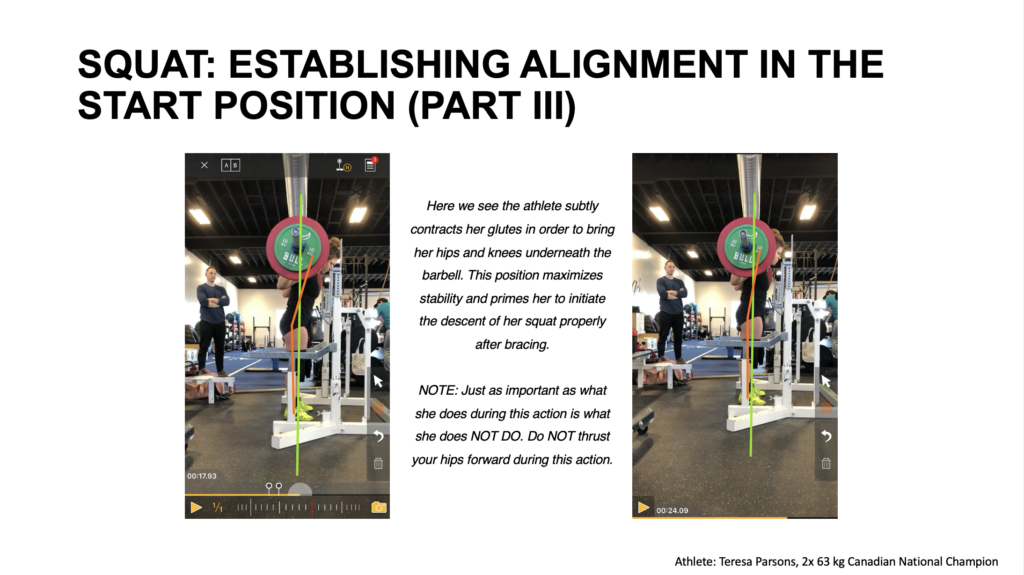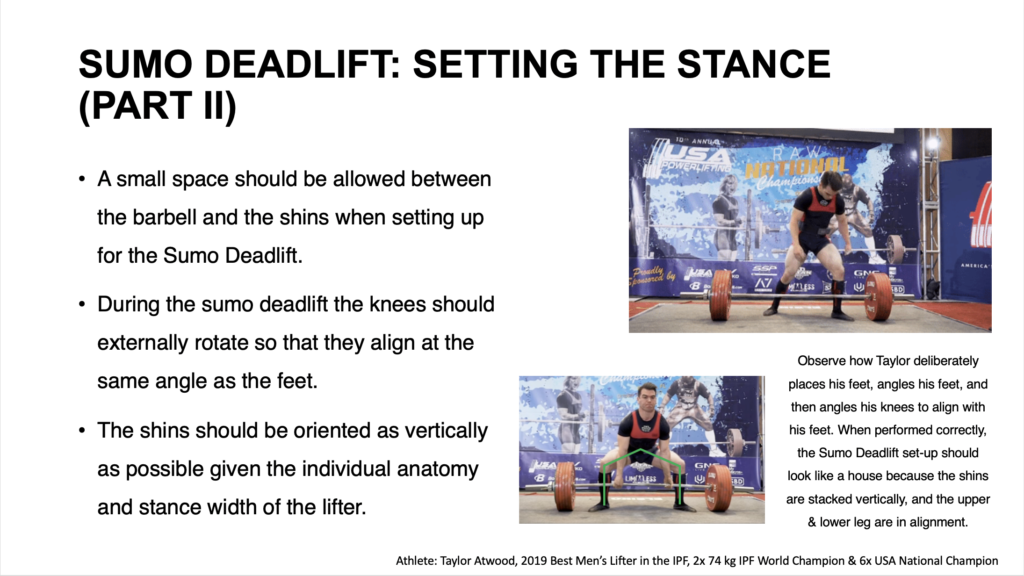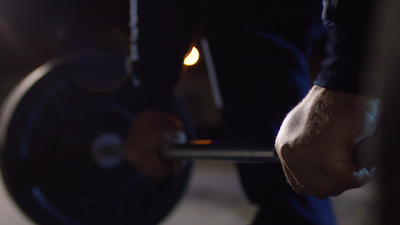Jason Tremblay
Bachelors of Health & Physical Education, PFT Certificate
President & Co-Founder of The Strength Guys Inc.
3x IPF World Champion & 18x National Champion Coach
Technical execution in powerlifting describes the movement patterns and strategies employed by a lifter on the Back Squat, Bench Press, and Deadlift. How much or how little a lifter should adjust technique based on the observations of either a coach or themselves can be a contentious and polarizing subject.
On the one hand, one could argue in favor of training only the Squat, Bench Press, and Deadlift with a strict approach to technique by stating that the competition lifts are a skill, and specific practice is the best way to improve that skill. The observation that higher-level competitors can often complete lifts at slower velocities closer to their one-repetition-maximum than less experienced trainees is practical evidence to support this notion.
On the other hand, one could argue in favor of allowing more movement variation in training by rightly stating that encouraging movement variation is a critical component of how lifters learn and strengthen different positions to improve performance and reduce injury risk. A more straightforward argument for allowing more significant movement variation is that doing so will allow lifters to channel their efforts into increasing their physical strength without meeting a strict set of standards. After all, who wants to think their way through sets for years to optimize their technique and maybe maximize performance?
My personal view on the debate of technique strictness versus movement variation is that a nuanced approach based on a careful assessment of the individual is the best route to take. The end goal is for lifters to efficiently execute their lifts with a high degree of automaticity, reliability, and confidence with heavy loads. This is the solution we aim to provide through our technique coaching and video analysis online service offered through Positions of Power (link to services page). A breakdown will be given on how TSG provides technique coaching for powerlifters in an online setting below. First, we’ll examine TSG’s three-stage pyramid philosophy on the coaching technique.
Powerlifting only has three lifts, and therefore, the movement capacity required to compete in the sport is limited compared to more complex sports such as ice hockey, basketball, football, or soccer. But that doesn’t mean that movement capacity isn’t vital to maximizing performance in the Back Squat, Bench Press, and Deadlift.
Stage 1 of our pyramid philosophy to coaching technique is to establish movement awareness in the lifts. Movement awareness is the pyramid’s foundation, because a lifter who lacks movement awareness may struggle to perform basic tasks such as hitting depth consistently on the squat or hinging at the hips during a deadlift. A lifter who struggles with movement awareness may also struggle to make sense of and implement a coach’s technique instructions. In an ideal world, each adult would have the appropriate physical education and background in structured and unstructured play to perform a Squat or hip hinge properly during their youths. Yet, the reality is that sometimes these skills need to be learned later in life, and it’s challenging to work on more advanced concepts until basic movement competency is developed.
Once a lifter has established the necessary movement competency to perform the sport’s movements, they can move on to learning the fundamentals of technique. It’s often this stage of a lifter’s development that has gone unaddressed when I begin to work with a lifter. It’s within the spirit and fabric of equipped powerlifting to break the main lifts down to focus on the ranges of motion where a lifter is weak. However, unequipped powerlifting is different, I believe that special exercises should only be added into the training to assist with learning a technical concept or once the fundamentals of proper technical execution are in place. The risk of skipping proper technical performance and rushing straight to special exercises designed to fix the problem is that these exercises may be attempting to strengthen a weakness, which may be a technical problem in the first place.
To help our lifters improve their technical proficiency, Stage 2 of our technique coaching philosophy is composed of a comprehensive technique curriculum that explains, illustrates, and demonstrates how to execute the critical steps of each main lift. A few demonstrations slides of our technique curriculum ” The Power Portfolio – 4th Edition” are available for your viewing below.



The third stage of our technique coaching philosophy is identify and train weaknesses. This stage involves a biomechanical assessment of a lifter using our video analysis guidelines and protocol. We’re looking for movement inefficiencies that may be detrimental to the lifter’s performance, not due to the lifts’ improper technical execution during this assessment. Examples of this may be the knees drifting back and the hips rising out of the hole in a Squat. Suppose this movement pattern is not due to a lack of upper back stiffness or the center of mass being placed over the heels or toes instead of the mid-foot. In that case, strengthening the thighs in the joint angles found at the bottom of the squat may lessen this pattern’s severity over a long time.
The final component of our technique coaching philosophy is an ongoing monitoring program because the potential for a lifter to forget a cue, develop an asymmetry, or sustain and have to come back from an injury is very realistic for any athlete’s career. Please take a look at the video below where Taylor Atwood and his coaching team rehearsed bracing the lats during his final taper session before winning his second World Championship and the Champions of Champions award. This example shows that even the best athletes in the sport require a touch-up to be at their best from time to time.
As a coach and video analyst, my goal is to identify which stages of the technique pyramid a lifter requires focus in and then provide the instructions to help them perform better, lift safely, or evolve their program to elicit long-term change.
The technique coaching service that we provide through Positions of Power includes a comprehensive analysis and write-up of the clients Back Squat, Bench Press, and Deadlift, which contains the coach’s observations and improvement instructions. Clients of the technique coaching service will also receive a copy of TSG’s technique curriculum, “The Power Portfolio – 4th Edition”, as well as a follow-up check-in after 2-4 weeks to assess lifter progress and provide adjustments if needed.

